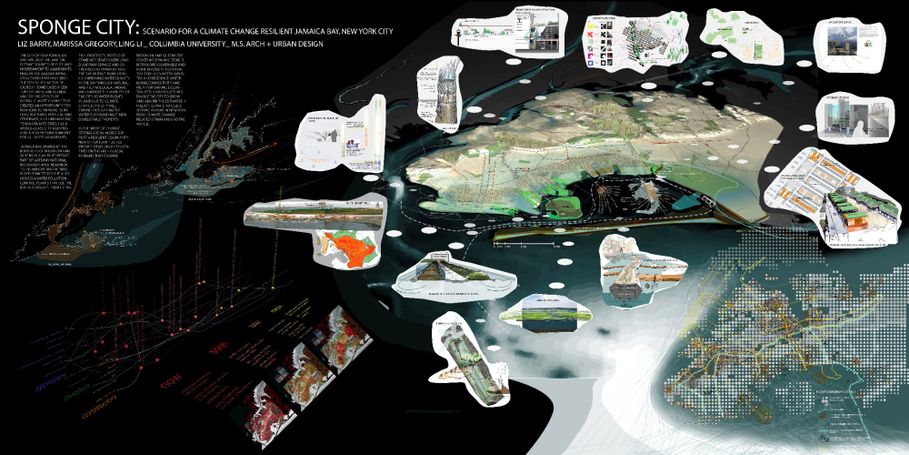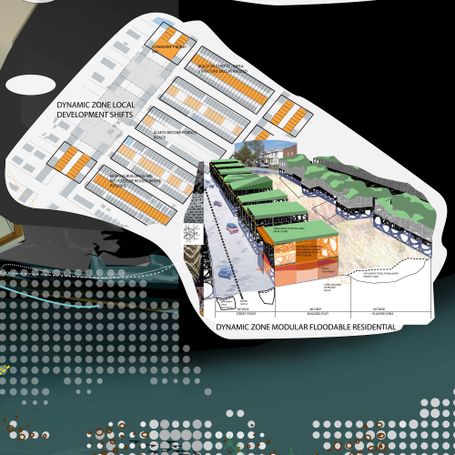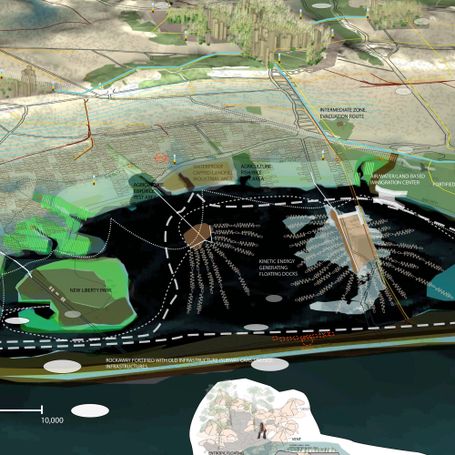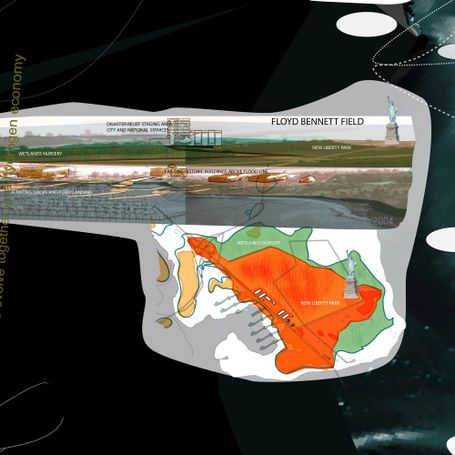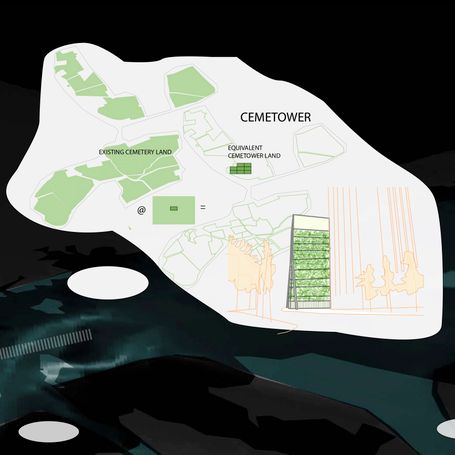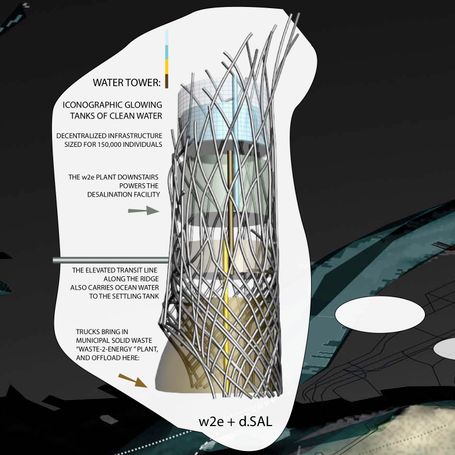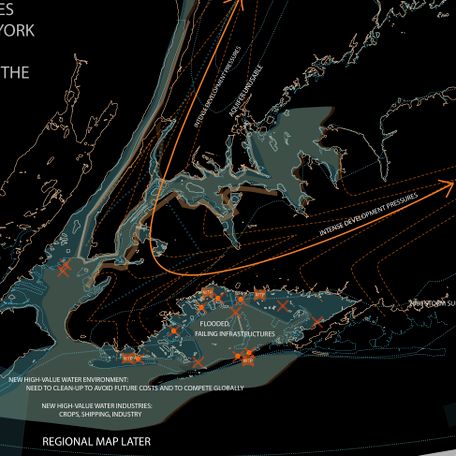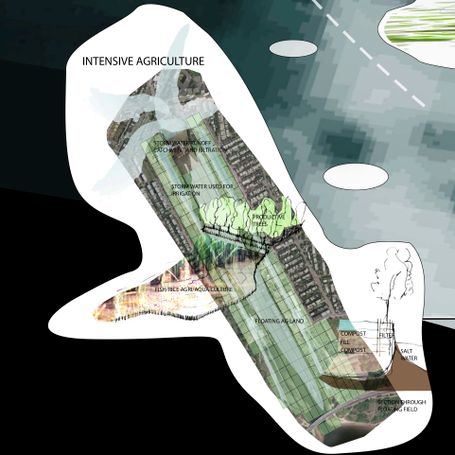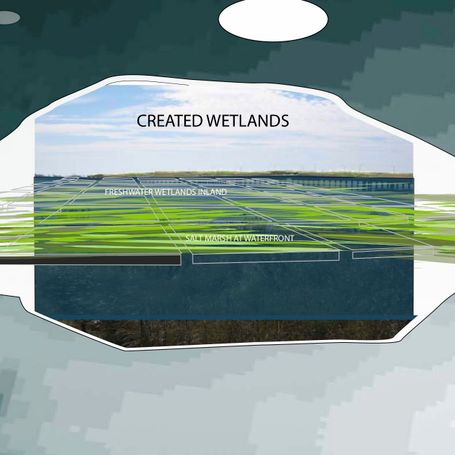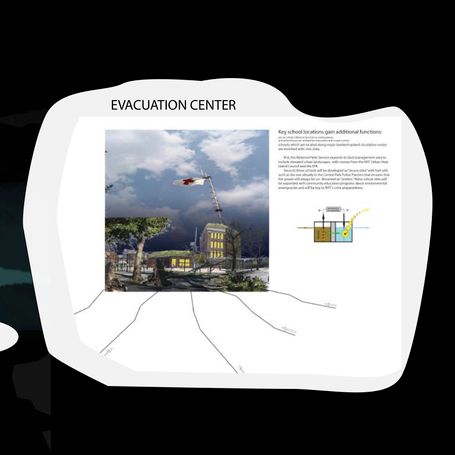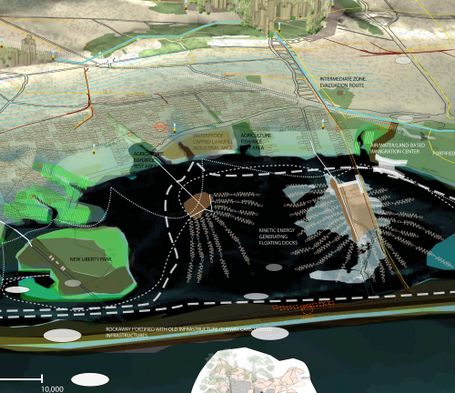
Sponge City
What does climate change and sea level rise mean to New York City?
Scenario for a climate change resilient NYC
Group project with Elizabeth Barry and Ling Li, Columbia University - 2006
The city of New York is an archipelago - reliant on distant sources of fuel and nourishment to maintain its health. The massive infrastructures that have been the city’s lifeline for decades, in some cases a century or more, are vulnerable to the effects of global climate change. This creates an opportunity for New York to improve its infrastructures, physical and otherwise, and urban fabric, to maintain its status as a world-class city and provide a healthy environment for all of its inhabitants.
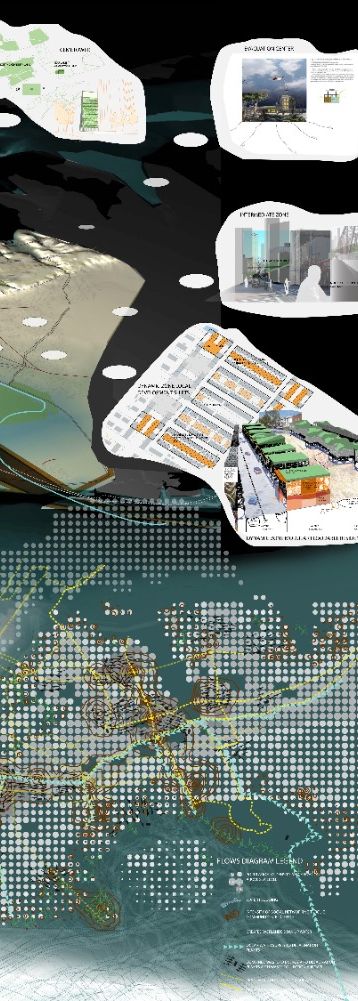
Jamaica Bay, shared by the boroughs of Brooklyn and Queens, is a wildlife refuge, part of Gateway National Recreation Area, neighbor to JFK airport and retired Floyd Bennett Field. It also houses 4 water pollution control plants that use the bay as a stage in their filtration processes. Dozens of combined sewer overflows dump raw sewage and untreated storm water into the bay when it rains heavily. Improving water quality in the bay through natural and technological means will improve the viability of the city.
As water pushes inland due to climate change, the city will expand out, making the water surrounding it new developable property.
In the midst of change, strong social nodes support a resilient community. New opportunity zones provide development incentives on the high glacial moraine that crowns Brooklyn and Queens.
The coastline dynamic zone is both more vulnerable and more diverse in its potential for land-water industry and residence. Water-borne connectivity, and high-performing decentralized infrastructures enable the city to grow and absorb the estimated 1 million climate refugees seeking asylum in New York from climate change-related strain around the world.
© Copyright 2022, Marissa Vaish. All rights reserved.
